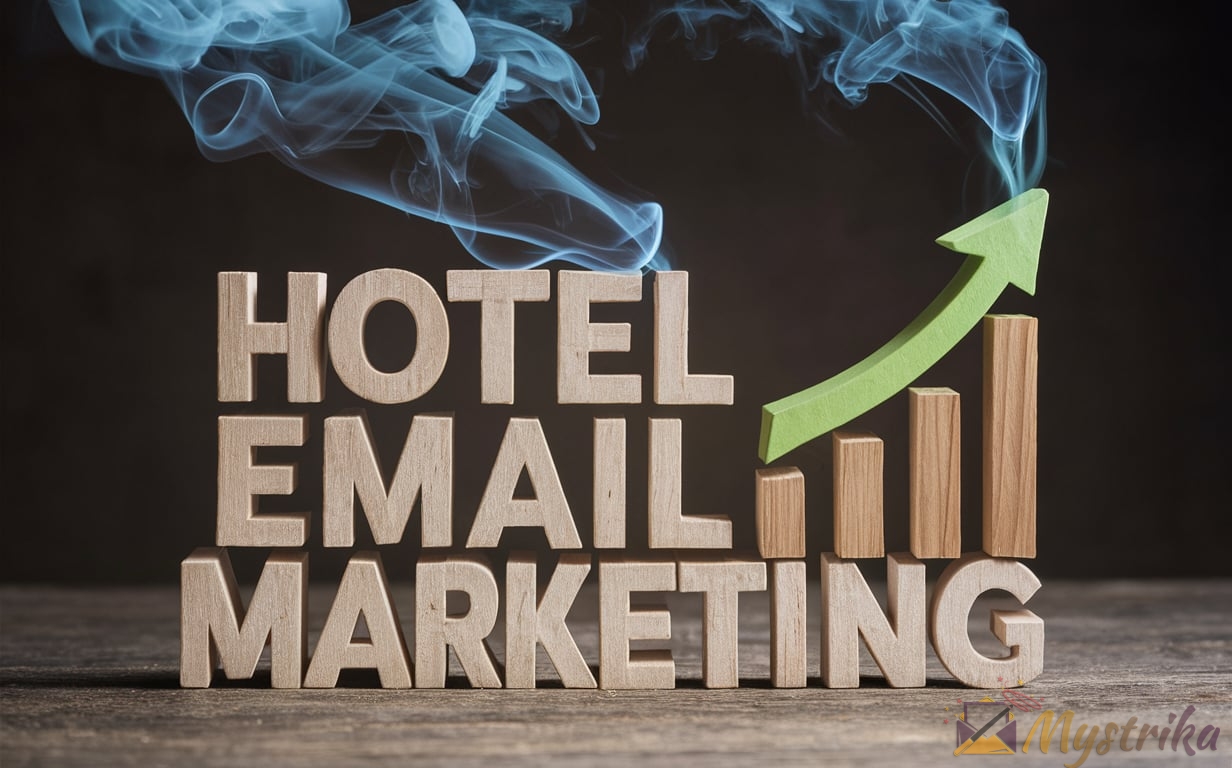Outsmarting OTAs starts with email. Boost hotel bookings through strategic marketing directly to guests. Use segmentation, automation and design to shape captivating campaigns. Then watch occupancy and revenue climb.
Current State of Hotel Email Marketing
Email marketing remains one of the most effective digital channels for hotels to connect with guests, nurture relationships, and drive direct bookings. However, simply sending mass blasts is no longer enough to cut through the noise. Today’s guests expect personalized, relevant communications timed to their booking journey.
Email Delivers Strong ROI for Hotels
Research shows that email marketing generates an average return on investment (ROI) of $42 for every $1 spent – over 4,000%! This dwarfs other channels like social media ads ($5), direct mail ($15), and paid search ($18).
For hotels, the ROI can be even higher when campaigns are carefully targeted. Email enables properties to reach guests directly with exclusive offers and packages not available on OTAs. This generates more direct bookings and reduces reliance on costlier third-party sites.
Personalized emails also nurture relationships beyond the stay, enticing guests to return repeatedly. Loyal guests are a hotel’s most valuable asset, spending more and costing less to retain versus new customers.
But Open and Click Rates Lag Behind Other Industries
However, open and click-through rates for hotel emails are below average compared to other sectors. Studies show:
- Average open rate for hotels is 17.2% versus 22.7% across industries
- Average click rate is 2.4% versus 3.0% for all sectors
This highlights the need for hotels to up their email marketing game with compelling content and subject lines. Too often, properties take a bland, batch-and-blast approach instead of optimizing campaigns for engagement.
Guests are inundated with marketing emails daily. To stand out, hotel emails must provide tangible value, inspiration or entertainment – not just sales pitches.
Guests Expect Relevant, Timely Email Communications
Today’s guests expect hotels to deliver emails matched to their booking journey. The where and when of communications is just as crucial as the content itself.
Key emails guests want include:
- Booking confirmation immediately upon purchase to reassure guests their reservation is set.
- Pre-arrival tips 2-3 days before arrival to build excitement with local recommendations.
- Stay satisfaction surveys 1 day after checkout to collect feedback while the experience is fresh.
- Post-stay offers 2 weeks later to encourage rebooking.
Dynamic personalization is also a must. Guests want emails tailored to their loyalty status, room type, past stays and preferences.
Platforms like Revinate allow hotels to track these guest interactions and behaviors, then segment lists and automate relevant follow-ups timed for maximum impact.
For example, high-value guests may receive exclusive VIP offers, while first-timers get more general destination tips and promotions.
The data is clear that email drives unmatched ROI for hotels. But costs are rising as open rates decline across the industry. Hotels must deliver targeted, relevant messaging with compelling content to cut through the noise. The combination of art and science ultimately makes email a winning digital channel to boost direct bookings.
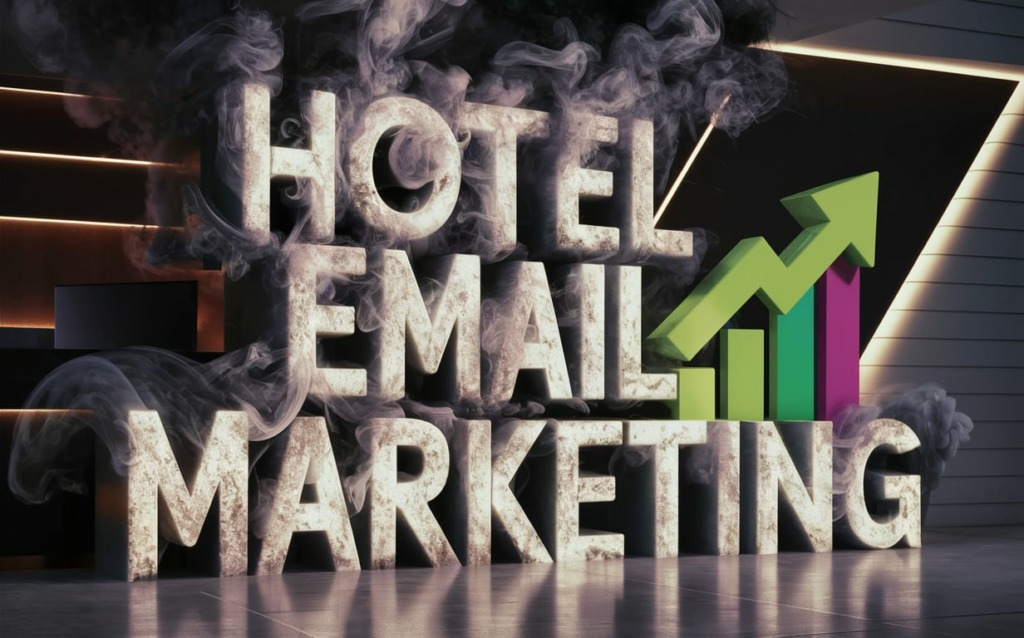
Build Your Hotel’s Email List
The foundation of any successful hotel email marketing strategy is building a robust list of engaged subscribers. Collecting guest emails should be an ongoing priority through various touchpoints.
A larger, high-quality list gives hotels the power to directly reach more potential and repeat guests. It also reduces reliance on expensive third-party booking sites to acquire customers.
Opt-In Forms on Your Website
The most obvious place to capture emails is directly on your hotel website. This provides a channel to communicate promotional offers not available anywhere else.
Strategically place opt-in signup forms on high-traffic pages like:
- Homepage
- Contact
- Special offers
- Event/wedding pages
- Restaurant or spa pages
Reduce friction by only asking for essential info – name and email. Optional fields like location or reason for travel can help with segmentation later.
Make the forms crisp and uncluttered on mobile, where most browsing occurs today. Allow instant signup via social login buttons as well.
Pop-up forms can also boost conversions by offering an instant incentive like 10% off or free breakfast. However, avoid overusing pop-ups which can annoy visitors.
Collect Emails During Guest Registration
The guest registration process presents a prime opportunity to capture email addresses. Instead of burying an opt-in checkbox, make joining the mailing list a default yes.
Allow guests to easily opt out if they wish. But the vast majority will stick with the default option when focused on quickly checking in.
Also prominently promote signup on self check-in kiosks. Offer an immediate perk like a free drink voucher as added incentive. This captures emails from walk-in guests who may not have booked directly.
Promote Signups on Social Media
Actively encourage social followers to join your email list as well.
Share links in your Instagram Stories and Facebook posts. Run occasional contests for free nights that require signup to enter.
Social proof indicates 82% of consumers are more likely to trust a company after viewing social media posts about it. So promote the size and exclusivity of your VIP list to attract more subscribers.
Cross-promoting across platforms strengthens engagement everywhere. Email further amplifies your social reach by enabling targeted promotions.
Offer an Incentive for Subscribing
People love freebies, so offer an appealing incentive in exchange for a new subscriber’s email address.
Some incentive ideas include:
- Discount on first booking
- Free breakfast
- Spa or restaurant credit
- Loyalty status upgrade
- Local travel guide
- Entry in giveaway contest
The incentive should be contingent on confirming the opt-in by clicking in a double opt-in email. This verifies the email address is valid and engaged.
To maximize conversions:
- Tailor the incentive to your hotel’s offerings
- Make the value high enough to compel action
- Include deadline to create urgency
- Follow up with confirmation and details
- Limit to one incentive per person
A review of 1.3 billion emails by MarketingSherpa found discounts generated the most signups, followed by content offers and contest entries. Mix up your incentives to appeal to different segments.
Building your hotel’s subscriber list takes persistence through multiple channels. Prioritize email signup on your website and during the booking process. Promote joining your list on social media as well.
And don’t forget that an appealing incentive goes a long way. With a compelling offer, you’ll see an uptick in high-quality subscribers willing to engage with your email campaigns and special offers.
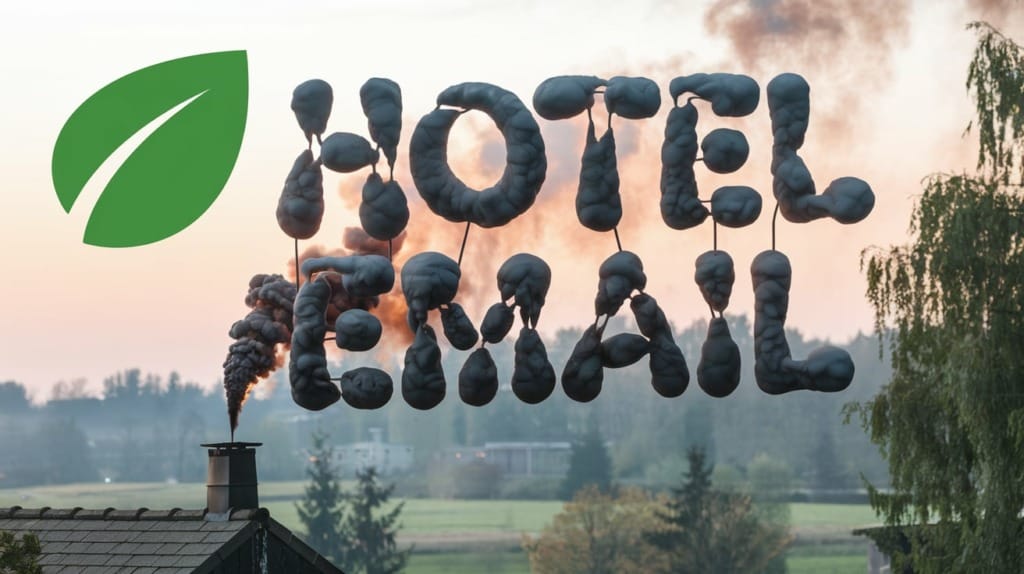
Segment Your Email List for Personalization
Sending blanket emails to every subscriber is a wasted opportunity in hotel email marketing. Segmentation allows properties to divide their list into groups with shared traits. Messages can then be tailored for relevance to each segment.
The primary goal is delivering content that resonates better with each subset of subscribers. This results in higher open and click rates, more conversions, and lower unsubscribe rates.
Divide by Guest Preferences and Behaviors
Start by looking at the data you already collect on guests:
- Booking history – Frequency of visits, spend, cancelations
- Preferences – Room type, amenities used, requests
- Demographics – Age, gender, location, language
- Engagement – Email/click interaction, social follows
Then create segments based on common factors that impact preferences:
- Leisure vs business travelers
- Geography/country of origin
- Lead source like OTA, direct, corporate
- Travel party size and composition
- Loyalty program level
- Previous on-site purchases and activities
- Event attendance like conferences or weddings
The segmentation options are nearly limitless. Even a basic split between new and repeat guests enables more relevant messaging.
Review reports in your hotel CRM to identify the top 10-15 segments that engage best. Avoid creating too many narrow niches early on. Start broader first.
Create Targeted Content for Each List Segment
Now the fun begins – crafting tailored content!
Send new subscribers a warm welcome email with incentives to book their first stay. Highlight key amenities they would enjoy based on their profile.
For returning leisure guests, promote seasonal packages and deals for upcoming holidays or events. Include imagery and perks tailored to past behaviors.
Offer business travelers rate discounts or room upgrades based on their loyalty status. Upsell airport transfers or early check-in.
Timely, personalized content keeps your hotel top of mind and nurtures relationships with each segment. Track different versions to see what resonates best.
Follow the 80/20 rule – 80% of emails should provide value, insights or entertainment. Then 20% can make a soft sales pitch or promotional offer.
Here are examples of highly targeted hotel email campaigns:
- Young families ➜ “Kid-Approved Favorites for Your Upcoming Stay”
- Local empty nesters ➜ “Wine Lovers Weekend Getaway Package”
- Business event attendees ➜ “5 Tips to Maximize Your Conference Experience”
- Loyal leisure travelers ➜ “Enjoy 10% Off Our New Luxury Spa Treatments”
- First-time guests ➜ “Experience Our Hotel – Your Guide to a Memorable Stay”
Email segmentation is a dedicated, ongoing process. But the effort pays off by making your messaging more relevant and compelling to each guest segment. Start dividing your list based on clear differentiators in guest profiles. Then develop content tailored to the unique interests and needs of each group.
With personalized emails matched to subscriber segments, your campaigns will stand out in crowded inboxes. You will see measurable gains in engagement, conversions, and long-term loyalty from leisure and business travelers alike.
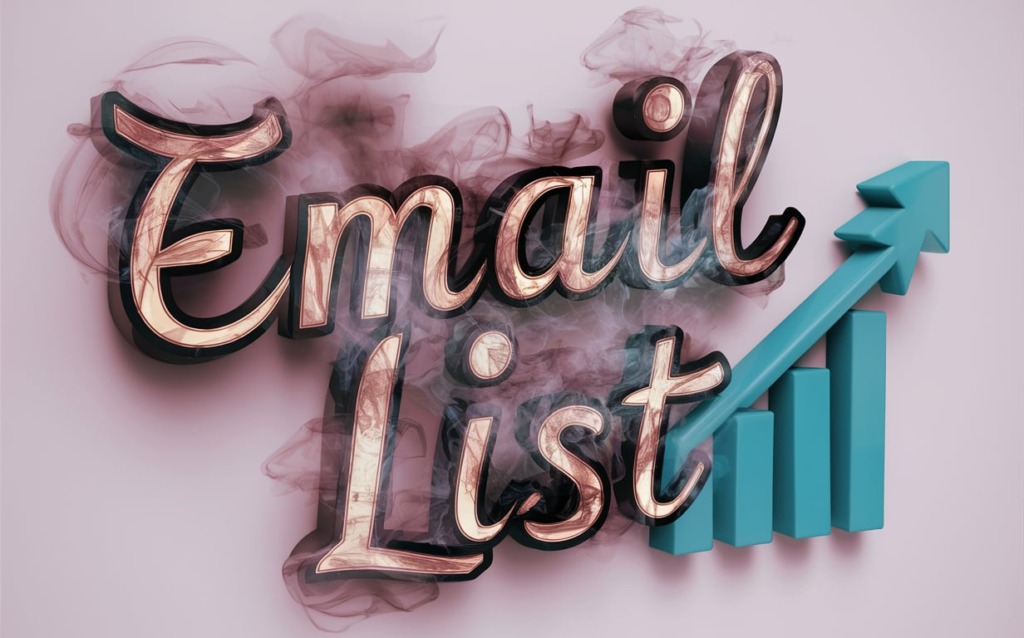
Time Your Emails Strategically
When subscribers receive relevant communications at just the right times has a major impact on engagement and conversions. Aligning emails to the customer journey should be a strategic priority.
Mackenzie Campbell of Revinate notes that 98% of ancillary revenue came from emails sent pre-arrival. The booking process and lead-up to a stay represent prime opportunities to connect.
Critical touchpoints where timely emails make a difference include:
Booking Confirmation Emails
The booking confirmation email should be triggered immediately upon purchase to reassure the guest their reservation is set.
This automated confirmation is expected, but exceeds expectations by including:
- Arrival and departure dates
- Room confirmation and rate
- Cancellation policy
- Upcoming deposit/payment dates
- Links to modify the reservation
Providing reservation details promptly reduces calls to the front desk from anxious guests. Use this opportunity to introduce any pre-arrival offers as well.
Pre-Arrival Preference and Upsell Emails
Next, send preference emails 2-5 days before arrival to get the guest excited about the impeding trip. Ask questions like:
- Any special requests or needs?
- Interested in spa/dining offers?
- Arriving by car or need transfers?
- Want an upgrade or celebrations?
Then tailor the pre-arrival reminder email 1-2 days out based on their responses. Show you listened and share arrival instructions, local tips, and upgrades purchased.
These make guests feel cared for before even setting foot on property. Pre-arrival emails also have the highest conversion rates for ancillary offers.
Final Pre-Stay Reminder Emails
A quick reminder the day prior reassures guests their stay is top of mind. Include:
- Confirmation of special requests or purchases
- Arrival instructions and parking/transit options
- Links to download your app or view digital key
- Last chance to modify or upgrade their reservation
This last touchpoint right before arrival day eliminates any lingering guest doubts or concerns. They appreciate the confirmation their business matters.
Post-Stay Thank You and Feedback Emails
Once a guest has checked out, immediately send an automated receipt and thank you for their stay.
Asking for feedback needs a delicate touch. Wait at least 24 hours post-checkout so they have time to travel home and reflect on their experience.
The feedback email should:
- Thank the guest again for choosing your property
- Ask for ratings on key sites like TripAdvisor or Google
- Offer an incentive for completing a quick survey
- Provide an easy link and call-to-action to submit feedback
Positive reviews help drive bookings. Brief post-stay surveys give operational teams valuable insights to improve experiences. Follow up again later with another call to action to share their memories on social media.
Timing is everything with email marketing. Aligning campaigns to the guest booking journey ensures your communications remain relevant. From confirmations to pre-arrival outreach and post-stay feedback, timely emails make guests feel listened to while increasing conversions.
Design Visually Appealing Emails
Emails with compelling visual design have a crucial edge in engaging subscribers and prompting action. Yet hotels often overlook this opportunity by sending dull, text-heavy messages.
Follow modern best practices to make your hotel emails pop on any device.
Use High-Quality, Relevant Images
Our brains process visuals 60,000 times faster than text. Inserting quality photos or videos in hotel emails can boost click-through rates over 100% compared to plain text.
Some tips for selecting strong visuals:
- Show real hotel scenes guests will experience, not generic stock photos
- Align to the email goal – e.g. pool photos for a summer package promo
- Capture emotions – joy, relaxation, romance, excitement
-Feature local sights or unique architecture
- Pick bold colors that catch the eye
- Use recent photos to keep it fresh
- Go behind-the-scenes – e.g. chefs prepping in the restaurant
Email tools like MailerLite make it simple to create image galleries. Just drag and drop photos right into a message.
Ensure Mobile Responsiveness
Since the majority of emails are read on smartphones, responsiveness is key. Email design should:
- Look sharp on all screen sizes (test on mobile to be sure)
- Use large fonts and buttons – thumb-friendly for tapping
- Limit wide images that require scrolling
- Have a clear hierarchy of info
- Keep important info near the top
Maintain Brand Voice and Tone
Visually appealing emails require more than just great photos. The look and feel should immerse subscribers in your hotel’s unique personality and vibe.
Brand elements to include:
- Logo
- Color palette
- Fonts
- Icons
- Illustrations
- Patterns
- Tone of writing
Maintaining a consistent brand image across all guest touchpoints including email makes your communications instantly recognizable. The imagery and text should tell a compelling story around your property’s amenities, location, and ambiance.
Use your hotel’s visual language to create emails that evoke emotion and atmosphere for subscribers. When done effectively, your emails become an extension of the guest experience, even for those yet to visit in person.
Follow modern design principles to craft visually appealing emails that pop on mobile devices. Strategically incorporate high-quality photos, videos, and graphics that align to your brand story. With compelling email design, you will boost engagement, click rates, and guest conversions.

Automate Your Hotel Email Workflows
Manually crafting and sending all guest emails is an immense effort. The risk of human error also grows with large lists. That’s where marketing automation becomes invaluable.
Email automation allows hotels to pre-schedule communications or trigger them based on guest actions. This systematizes the process while providing a consistent, high-quality guest experience.
Triggered and Time-Based Emails
Hotel email workflows can be automated in two key ways:
Triggered emails are sent when a specific event occurs like:
- Guest booking
- Arrival or departure
- Abandoned checkout
- Click in a past email
- Bad review
Time-based emails are scheduled to deploy on a certain cadence:
- 7 days before arrival
- 24 hours after checkout
- 15 days post-stay
Well-known triggers include the booking confirmation and post-stay receipt. But personalized workflows can be built around nearly any guest behavior.
For example, target guests who clicked a spa promo in a past email with a follow-up discounted offer. Or remind those who abandoned their cart to complete booking.
Sync Guest Data from Your PMS
Automation works best when integrated with your property management system (PMS) and customer relationship management (CRM) platforms.
Syncing data on guest bookings, preferences, and behaviors enables two-way communication between systems to:
- Segment lists based on recent stays, upcoming reservations, preferences, etc.
- Populate guest names, booking details, etc. into emails for personalization
- Update profiles with email engagement events and preferences
- Track email performance attribution back to a booking or stay
This connectivity allows for truly tailored messaging matched to where each guest is in their journey.
Save Time While Delivering Consistent Experiences
It’s simply impossible to manually send timely, personalized emails to every guest at optimal times. The workload would be crushing.
Automating workflows provides huge advantages:
- Alleviates staff effort so they can focus on high-value tasks
- Ensures critical emails like confirmations always go out
- Facilitates complex, multi-step campaigns triggered by behaviors
- Allows testing with variations to improve performance
- Drives more ancillary revenue with well-timed upsell offers
- Creates consistent brand experiences despite staff turnover
- Provides reporting to pinpoint optimization opportunities
The benefits of marketing automation are profound. Hotels that embrace triggered and time-based email workflows reap dividends from amplified efficiency, revenue and guest delight.
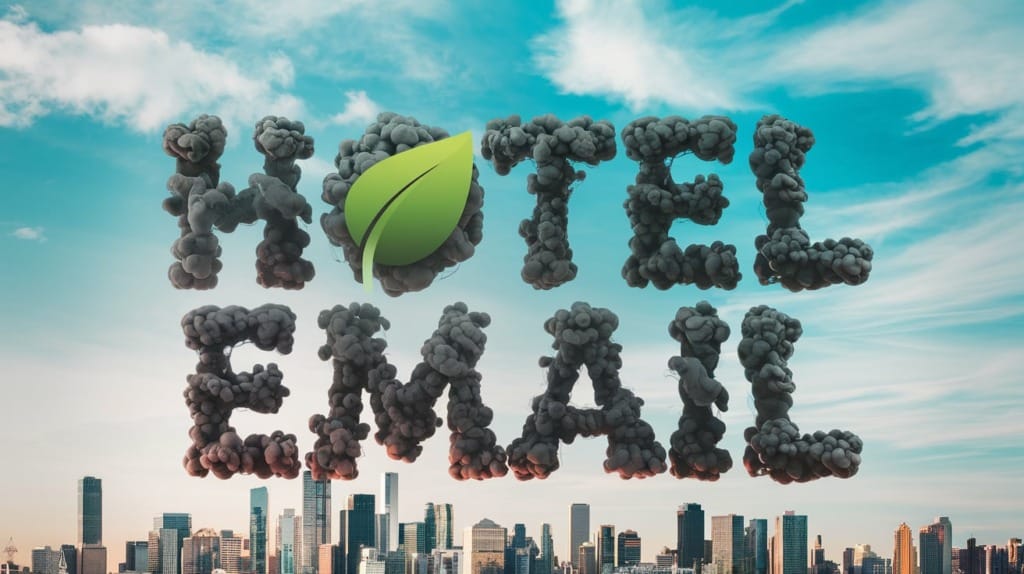
Continually Test and Optimize Campaigns
The work doesn’t stop once you’ve built your email lists and established automation workflows. Ongoing testing and optimization is crucial to improve email performance over time.
Apply lessons from analytics to iterate on content, segmentation, timing and more. Small tweaks can often lead to big lifts.
A/B Test Subject Lines and Content
A/B split testing lets you compare the effectiveness of two versions by sending each to a sample of your list.
Some elements to test:
- Subject lines – Shorter vs longer, urgency vs value focused, numbers vs text
- Content – Long form vs snippets, photos vs videos, lists vs paragraphs
- Layout – Section order, # of columns, image placement
- Offers – Discount percent, inclusion vs add-on, expiration dates
Set up the tests, then check which version scored better on key metrics like open rate, click rate and conversion rate. Rinse and repeat.
Analyze Performance Metrics
Dig into campaign reporting to spot trends and opportunities. Metrics to watch include:
- Open rate – Percentage of recipients who opened
- Clickthrough rate – Clicks divided by total emails sent
- Conversion rate – Desired action taken after clicking
- Bounce rate – Undeliverable emails from invalid addresses
- Unsubscribe rate – Opt-outs from your mailing list
Evaluate metrics across segments, days/times sent, email types, and other filters to diagnose underperforming areas.
Make Data-Driven Improvements
Let insights uncovered from testing and analytics directly inform changes.
If Monday emails lag Tuesday-Sunday, try shifting more promotions into the beginning of the week.
If clickthrough is lower on mobile, check that content is mobile-optimized.
If inbound corporate guests have double the unsubscribe rate, re-evaluate their preferred content.
Crunch the numbers, pinpoint weak points, form hypotheses, and adapt. The metrics will show what resonates. double the unsubscribe rate, re-evaluate their preferred content.
Crunch the numbers, pinpoint weak points, form hypotheses, and adapt. The metrics will show what resonates.
Ongoing optimization is like training at a gym – consistency compounds results. Minor enhancements over time aggregate into major performance gains.
Apply optimization best practices of testing subject lines and content, analyzing metrics, and making data-driven decisions. Your hotel email marketing will continue improving as you respond to the insights.
Engage Both Locals and Tourists
Most hotels segment email lists simply by basic demographics like age and gender. A more strategic approach is tailoring content specifically for local versus visiting audiences.
Locals and tourists have very different interests when it comes to a hotel’s offerings. Emails can be optimized by aligning relevant messaging accordingly.
Promote F&B Offers to Locals
For subscribers living nearby, the main incentive to visit your property may be dining, drinks or spa services. Engage this audience by featuring:
- New menu launches, prix fixe dinners or themed menus
- Holiday meals like Mother’s Day brunch or Thanksgiving feasts
- Cocktail classes, wine pairing dinners and chef events
- Anniversary or birthday packages at the spa
- Loyalty club rewards and happy hour specials
- Invitation-only dining events for top local customers
Locals don’t need a room but will book dining and leisure experiences at a favorite neighborhood hotel. Capturing these bookings retains their patronage.
Provide Travel Tips and Guides to Tourists
For out-of-town guests, your emails play a different role – getting them excited to explore the destination.
Help visiting subscribers by sharing:
- Highlights of top attractions, new exhibits or seasonal events
- Sample one-day itineraries or weekend guides
- Dining guides mapping the best local restaurants
- Insider tips from your concierge team
- Ideas for family activities with teens or kids
- Romantic options for couples like picnic spots or wine trails
This value-added content fuels anticipation about their upcoming trip. Include causes near your hotel mission that they might want to support, like sustainability programs or park restoration projects. Locally-focused emails nurture an emotional attachment to the community.
Tailor Content Accordingly
Review analytics to see which type of content resonates based on subscriber location.
Present locals a reason to keep coming back, whether to enjoy a monthly dinner special or get their hair done at the spa before a gala.
For travelers, spark inspiration to experience everything your dynamic destination has to offer.
Then track different email content against guest actions post-delivery. Are locals actually redeeming those happy hour coupons? Did that museum guide you recommended motivate a booking from out-of-town art aficionados?
Get a nuanced view of your audience by segmenting locals separately from tourists. Align relevant email content that speaks to each group’s interests and motivations. Keep refining based on data to maximize engagement and bookings.
Grow Your Email List for Long-Term Success
The bigger your quality subscriber list, the more revenue power you wield. Growing your hotel’s list should be an ongoing initiative across teams.
Use lead nurturing content, consistent promotion and loyalty rewards to continually expand your subscribers for future marketing success.
Nurture Leads with Valuable Content
The top priority is sending subscribers content they genuinely want to receive. Provide value by:
- Curating insider tips from your concierge team
- Sharing details on new amenities and offerings
- Highlighting unique packages and promotions
- Featuring local hidden gems and attractions
- Offering monthly draws for free nights
- Inviting participation in surveys
Deliver emails new subscribers look forward to reading. Surprise and delight with exclusive content. Send inspiring travel stories from past guests.
Valuable emails make new recipients more likely to engage and convert down the road.
Promote Your List in Marketing Materials
Actively promote joining your email list across all guest touchpoints.
Insert sign-up links or QR codes in:
- Direct mailers and brochures
- Print ads
- Onsite displays and tent cards
- Room key packets
- Restaurant menus
- Digital menus and ambient TVs
- Comments section of your social media
- Thank you page after submitting a web form
The more places you expose your list, the faster it will grow.
Reward Signups and Loyalty
People love getting deals. Offer incentives for new subscribers such as:
- Discount on first booking
- Entry into giveaway contest
- Earn bonus rewards points
- Exclusive members-only rate
- Complimentary extra night
- Room upgrade
- Resort amenity credit
- Free breakfast
Prompt new subscribers to confirm opt-in to claim their reward. This verifies their email and primes for activation.
Special perks also sweeten the value of your list for existing loyal subscribers. Spotlight VIP benefits and offers in dedicated “Insiders” emails.
Building a quality list of engaged subscribers is not fast or easy. It requires diligently nurturing leads, promoting signups, and rewarding loyalty over the long term. But the payoff of higher response rates and direct bookings is immense.
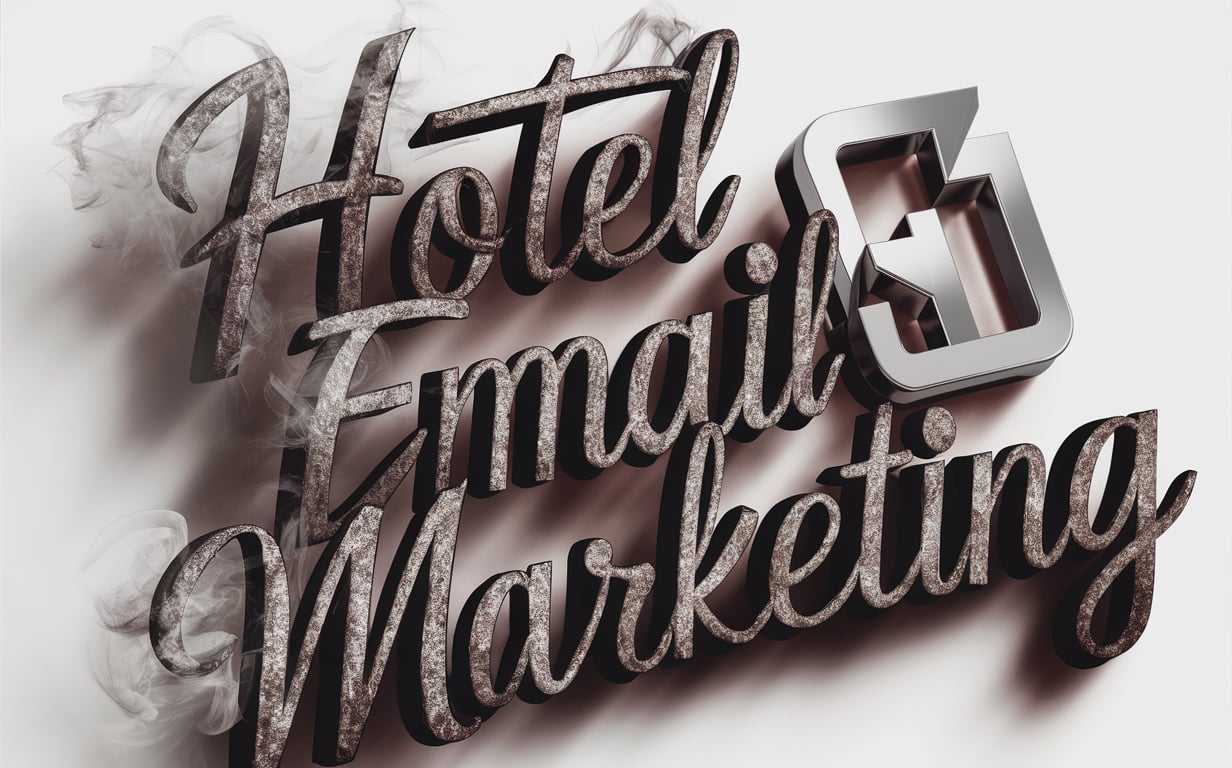
Key Takeaways
- Email marketing delivers unmatched ROI for hotels when executed strategically. Open and click rates lag other sectors, so compelling content and segmentation are musts.
- Prioritize collecting emails through opt-in forms, guest registration, social promotion, and signup incentives. Confirm new subscribers instantly.
- Segment your list by demographics, booking history and preferences. Craft targeted emails aligned to each group’s interests.
- Time your emails around the customer journey for relevance. Send confirmations immediately and preference/upsell emails before arrival. Follow up post-stay for feedback.
- Design visually appealing emails with high-quality photos, strong branding and mobile responsiveness. This boosts engagement and conversions.
- Automate triggered and scheduled emails for efficiency and consistency. Integrate your CRM and PMS to enable personalized workflows.
- Continuously test and optimize emails. A/B test subject lines and content. Analyze performance data and tweak low-converting areas.
- Engage both locals and visitors by tailoring content to their distinct interests like F&B offers or destination tips.
- Grow your list long-term by nurturing leads, promoting signups everywhere, and rewarding loyalty. Your email database is a highly valuable asset.
The right hotel email marketing strategy requires commitment, creativity and tools. But the effort pays dividends through higher direct bookings, ancillary revenue, reviews and customer lifetime value. Follow these best practices for email success.
Here are some frequently asked questions for the hotel email marketing article:
Frequently Asked Questions
What are some best practices for hotel email marketing?
Some key best practices include:
- Personalize emails by segmenting your list based on guest preferences and behaviors. Send targeted content tailored to each subset.
- Time your emails strategically around the customer journey. Send confirmations immediately after booking and preference/upsell emails a few days before arrival.
- Design visually compelling emails with high-quality images, strong branding, and a mobile-friendly layout.
- Automate triggered emails on actions like bookings and time-based emails on schedules for efficiency.
- Continually test and optimize elements like subject lines and content based on open/click rate data.
- Engage both local and visiting audiences by aligning relevant content to their interests.
How can hotels grow their email list?
Top tactics to grow your hotel’s email list include:
- Adding opt-in forms on your website, at check-in, and across marketing materials.
- Promoting list signups on social media and offering incentives for subscribing.
- Importing existing customer contact lists while respecting privacy regulations.
- Activating new subscribers by sending a welcome email and any promised incentives.
- Rewarding loyalty program members with exclusive subscriber-only deals and perks.
What type of content should hotels send in their emails?
Relevant and valuable content that provides inspiration or help. Topics can include:
- Local hidden gems, attractions and seasonal events for tourists
- New restaurant/spa offers and happy hours for locals
- Pre-arrival tips and recommendations based on guest preferences
- Post-stay feedback surveys and reviews requests
- Promotions and packages matched to buyer journeys and interests
- Behind-the-scenes or experiential stories relating to the property
How often should hotel emails be sent?
Most experts recommend 1-2 emails per week for an engaged audience. Sending too often risks subscriber fatigue. For sales promos, limit to just 1x monthly.
What email metrics should hotels track?
Key metrics to monitor performance include open rate, clickthrough rate, conversion rate, bounce rate, unsubscribe rate and attributed bookings. Compare across segments, days/times, campaigns, etc. to optimize.

